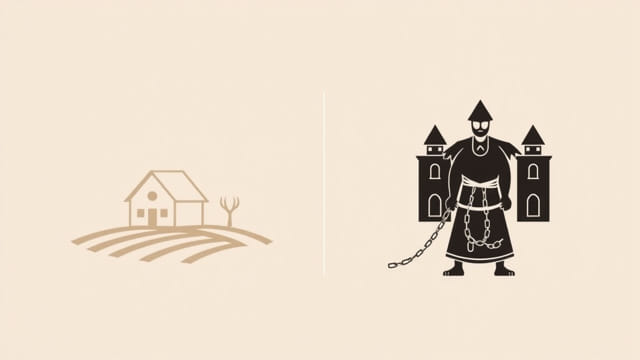Victoria 3 Homesteading Vs Serfdom
Victoria 3 offers players a deep and complex grand strategy experience, where the socioeconomic systems of the 19th and early 20th centuries come to life. Among these systems, the concepts of homesteading and serfdom stand out as two distinct ways of managing rural populations and agricultural production. Understanding the differences between homesteading and serfdom in Victoria 3 is crucial for players aiming to shape their nation’s economy, social fabric, and political landscape effectively. Both systems have unique impacts on population behavior, economic output, and political stability, making the choice between them a vital strategic consideration in the game.
Defining Homesteading and Serfdom in Victoria 3
Before diving into the gameplay implications, it’s important to clarify what homesteading and serfdom represent in the context of Victoria 3. Homesteading generally refers to a system where rural populations have individual ownership or rights to land, allowing them to farm for their own benefit. It embodies a more free and independent lifestyle for peasants or farmers, encouraging private property and personal economic growth.
In contrast, serfdom is a form of agricultural labor tied to feudal obligations. Serfs are bound to the land owned by nobles or landlords and must provide labor, produce, or other services in exchange for protection or the right to live on the estate. Serfdom restricts mobility and economic freedom, maintaining a hierarchical and dependent social structure.
Key Characteristics of Homesteading
- Individual ownership or tenancy rights of land
- Farmers produce primarily for their own subsistence and local markets
- Greater personal freedom and mobility
- Encourages economic development and entrepreneurial farming
- Typically associated with a more modern, capitalist rural economy
Key Characteristics of Serfdom
- Labor and production tied to a landowner or noble estate
- Limited personal freedom and restricted mobility for serfs
- Production often geared towards fulfilling feudal obligations
- Supports a rigid social hierarchy
- Represents a pre-capitalist, feudal agricultural system
Gameplay Implications of Homesteading vs Serfdom
The choice between homesteading and serfdom in Victoria 3 affects many aspects of gameplay, from economic efficiency to political power dynamics. Players must weigh the benefits and drawbacks of each system to align with their nation’s goals and challenges.
Economic Effects
Homesteading tends to boost economic productivity by incentivizing farmers to innovate and increase output. Since farmers have ownership or secure tenure, they are motivated to improve their land and adopt new techniques. This system supports market-oriented agriculture, which can contribute significantly to your nation’s GDP and tax revenue. The relatively free rural population under homesteading also facilitates labor mobility, allowing workers to move to urban centers if industrial jobs become available.
Serfdom, by contrast, often results in less efficient agricultural production. Since serfs are bound to their landlords and have fewer incentives for productivity improvements, output can stagnate. However, serfdom allows landowners to exert considerable control over rural labor, which can be useful in societies where maintaining strict social order is a priority. The system may generate stable but limited agricultural production, but it can hinder industrial growth due to reduced labor mobility.
Political and Social Considerations
Homesteading aligns well with liberal or reformist political ideologies that emphasize personal freedom and economic opportunity. Implementing homesteading policies can increase rural population satisfaction and reduce the likelihood of unrest, provided other conditions such as taxation and services are managed well. However, shifting away from serfdom may antagonize the landed aristocracy or conservative factions, potentially causing political tension or rebellion among the nobility.
Serfdom supports a traditional social order, reinforcing the power of nobles and landlords over the peasantry. This system can keep the rural population under tighter control, reducing the risk of peasant uprisings in some cases. Yet, it also tends to create dissatisfaction among the serfs themselves, who have limited rights and freedoms. Managing this tension requires careful political balancing and often reliance on coercive measures.
How to Implement Homesteading in Victoria 3
Transitioning your nation towards homesteading involves several steps. Players must enact land reform policies that grant ownership rights or tenancy security to rural populations. Encouraging infrastructure development and investing in rural education can support this shift by enhancing agricultural productivity. Reducing feudal privileges and weakening noble power are also essential to enable homesteading to flourish.
Governments may need to pass reforms that dismantle serfdom or abolish forced labor practices, which often require navigating complex political opposition. Supporting liberal parties and reformist interest groups can help push these changes through. Over time, homesteading fosters a more dynamic and resilient rural economy.
Advantages of Homesteading
- Increases agricultural efficiency and output
- Promotes rural economic development
- Encourages labor mobility and industrialization
- Reduces rural unrest and increases population satisfaction
Challenges of Homesteading
- May provoke resistance from nobles and conservative elites
- Requires investments in infrastructure and education
- Transition period may cause temporary instability
Maintaining or Reforming Serfdom
Some players might choose to maintain serfdom due to the immediate political control it offers or to preserve traditional power structures. In certain contexts, especially for nations with powerful aristocracies, serfdom may appear as a stable if inefficient system. However, ignoring the long-term economic costs and social dissatisfaction risks stagnation and rebellion.
Reforming serfdom typically involves gradual steps like improving serf rights, loosening labor obligations, and introducing land ownership reforms. These measures can ease the transition to more modern agricultural systems without provoking outright political collapse.
Victoria 3’s depiction of homesteading and serfdom adds depth to the strategic choices players face when managing rural populations and agricultural production. Homesteading promotes freedom, innovation, and economic growth, making it attractive for modernization-focused nations. Serfdom, while offering control and stability, limits economic potential and fosters social tensions. The decision between these systems influences not only your nation’s economy but also its political and social trajectory. Understanding the nuances of homesteading versus serfdom is essential for crafting a successful and engaging Victoria 3 campaign.
